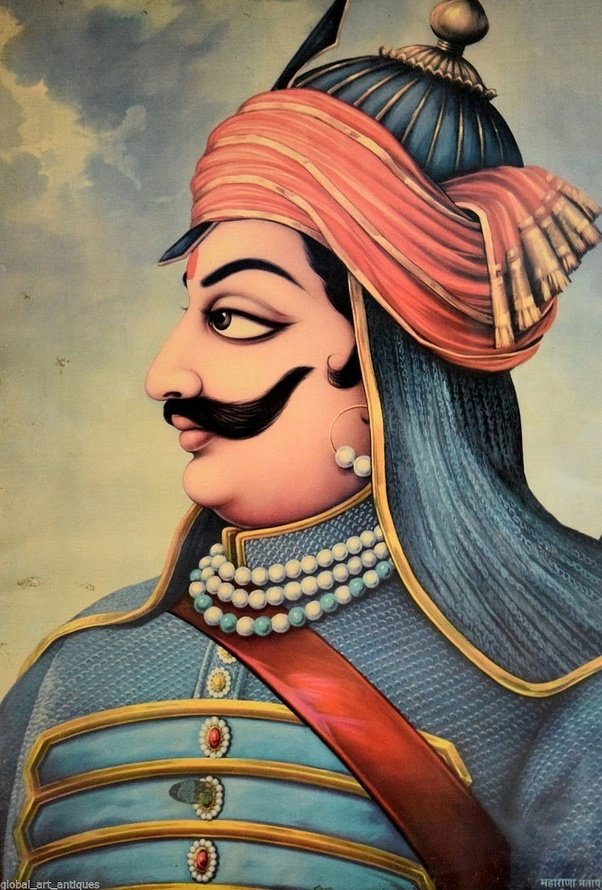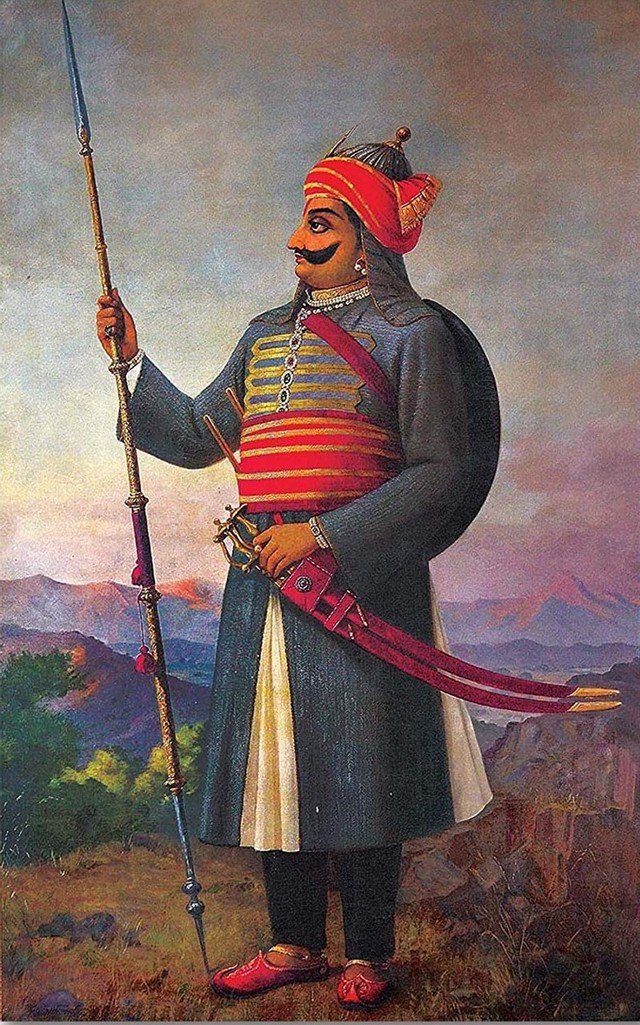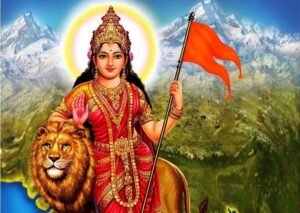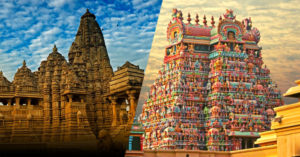
Maharana Pratap , born in 1540 in the princely state of Mewar, was a valiant Rajput ruler who became synonymous with resistance against Mughal expansion in India. He ascended to the throne of Mewar in 1572, succeeding his father Maharana Udai Singh II. Maharana Pratap’s reign was marked by relentless battles against the Mughal emperor Akbar’s forces, particularly during the Haldighati War in 1576, where he faced the formidable Mughal general, Man Singh.
Despite facing numerous setbacks and being outnumbered, Maharana Pratap’s courage, leadership, and determination earned him legendary status. His refusal to submit to Mughal authority, even after the loss at Haldighati, became a symbol of Rajput valor and resilience. He continued his resistance from the rugged terrains of the Aravalli Hills, adopting guerrilla warfare tactics against the Mughals.
Maharana Pratap’s unwavering commitment to protecting his kingdom’s sovereignty and upholding his principles of freedom made him a revered figure in Indian history. His legacy continues to inspire generations, symbolizing the indomitable spirit of resistance against oppression and tyranny. Even though he never regained control over all of Mewar during his lifetime, his legacy lives on in the hearts of millions, immortalized in folk tales, ballads, and the annals of Indian history.
History of Maharana Pratap
Maharana Pratap Singh, born on May 9, 1540, in the fort of Kumbhalgarh, Rajasthan, emerged as a legendary figure in Indian history due to his relentless struggle against the Mughal Empire’s expansion into Mewar. The eldest son of Maharana Udai Singh II, he was groomed from a young age in the martial traditions of the Rajputs, embodying courage, valor, and a fierce sense of independence. His life was punctuated by key events that defined his legacy.
Loss of Chittorgarh (1568): The tragic fall of the mighty fort of Chittorgarh to the Mughal forces under Emperor Akbar in 1568 marked a turning point in Maharana Pratap’s life. Forced to flee with his family, he refused to accept defeat and vowed to reclaim Mewar’s independence. This event ignited a flame of resistance within him, setting the stage for his lifelong struggle against Mughal domination.
Battle of Haldighati (1576): The Battle of Haldighati in 1576 was a critical juncture in Maharana Pratap’s resistance against the Mughals. Facing the formidable Mughal army led by Man Singh, he fought valiantly, although outnumbered. Despite having loss, Maharana Pratap’s strategic retreat allowed him to continue his resistance through guerrilla warfare tactics. His refusal to surrender despite overwhelming odds endeared him to his people and cemented his reputation as a true warrior king.
Battle of Dewair (1582): The Battle of Dewair, fought in 1582, was another significant engagement in Maharana Pratap’s resistance against the Mughals. Facing the Mughal army led by the general Abdullah Khan, Maharana Pratap’s forces fought fiercely, inflicting heavy losses on the Mughals despite being outnumbered. Battle ended in a decisive victory of Maharana, it demonstrated Maharana Pratap’s ability to hold his own against the might of the Mughal Empire. The Battle of Dewair further galvanized support for Maharana Pratap’s cause, inspiring more Rajput clans to join his resistance movement against Mughal domination.
Establishment of New Capital (1576-1597): After Haldighati, Maharana Pratap established a new capital at Chavand, where he continued his defiance against Mughal authority. Despite facing numerous challenges and hardships, including diplomatic isolation and economic strain, he remained unwavering in his commitment to Mewar’s independence. During this period, he relied on the support of loyal nobles and the resilience of his people to sustain his resistance efforts.
Death and Legacy (1597): Maharana Pratap passed away on January 29, 1597, in Chavand, leaving behind a legacy of courage, resilience, and patriotism. His unwavering determination to uphold his principles of freedom and sovereignty continues to inspire generations, serving as a reminder of the importance of standing up against oppression and fighting for justice. Even in death, Maharana Pratap remained a symbol of hope and resistance, with his legacy living on in the hearts of millions of Indians, immortalized in folklore, ballads, and historical narratives.
Maharana Pratap’s life epitomizes the spirit of resistance and defiance against tyranny. His unwavering commitment to his people and his homeland serves as a testament to the enduring legacy of courage and resilience. Today, he is revered as one of Rajasthan’s greatest heroes, his name synonymous with the indomitable spirit of Mewar and the valor of the Rajput warriors.


Read More


200 words about Maharana Pratap- Know about major battles fought by Pratap

Vande Mataram meaning in English: Know all about the national song

Vande mataram meaning in hindi : Everything you should know about the beautiful song 1



good article